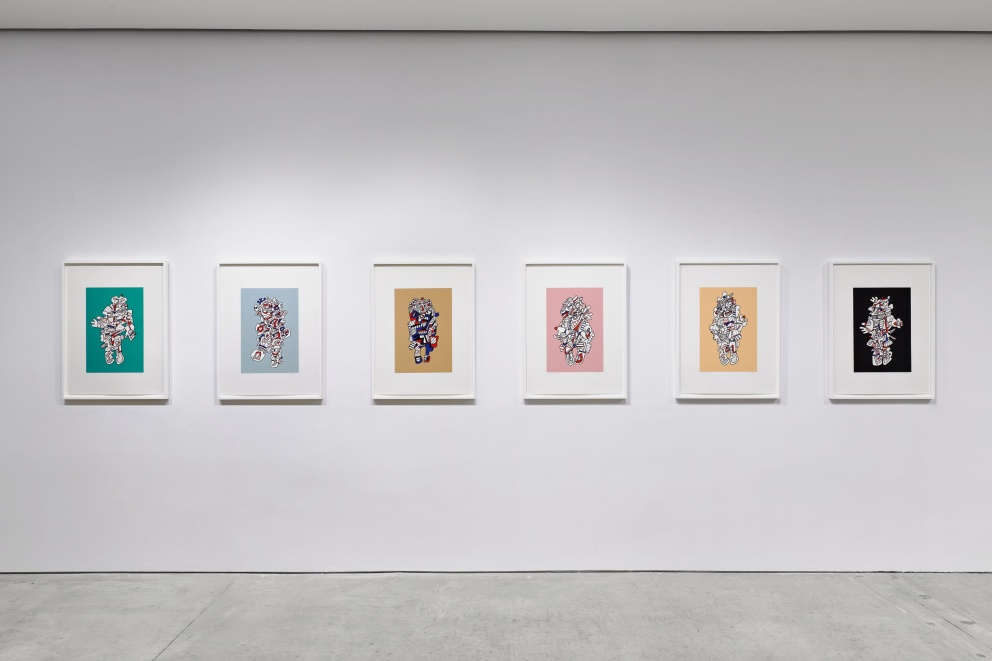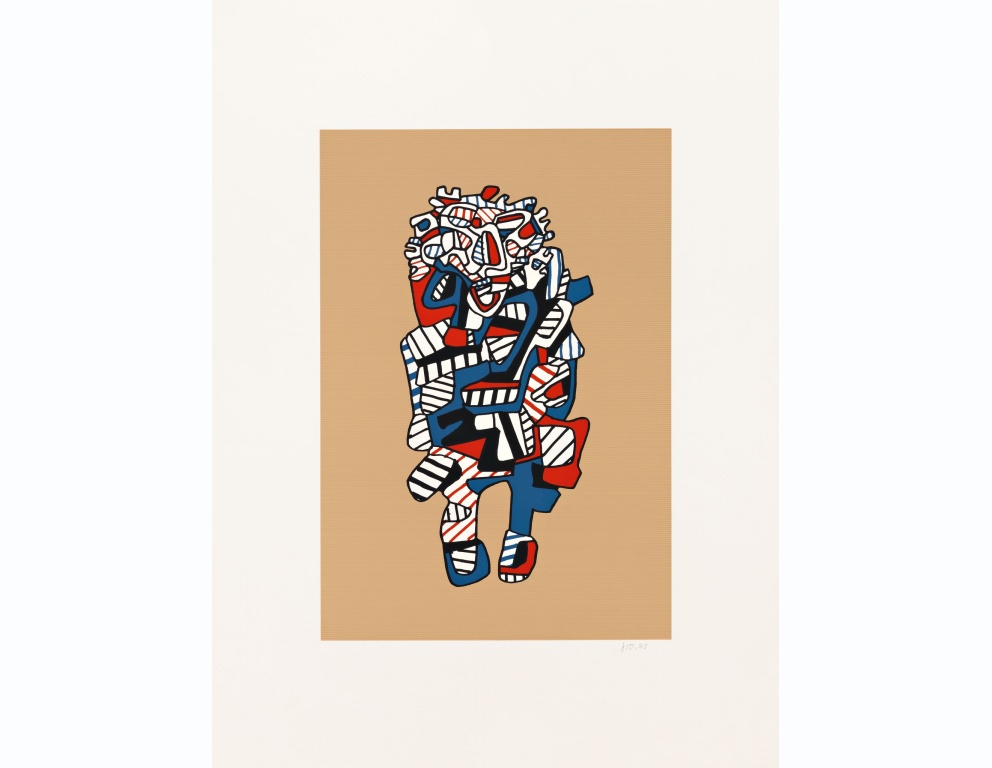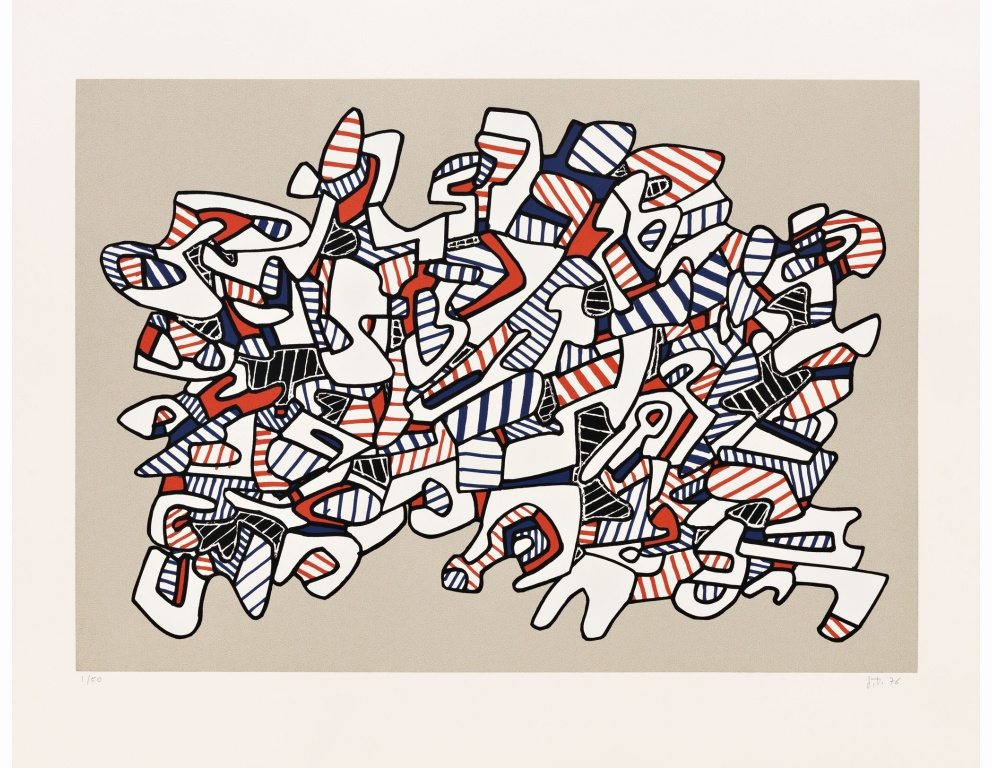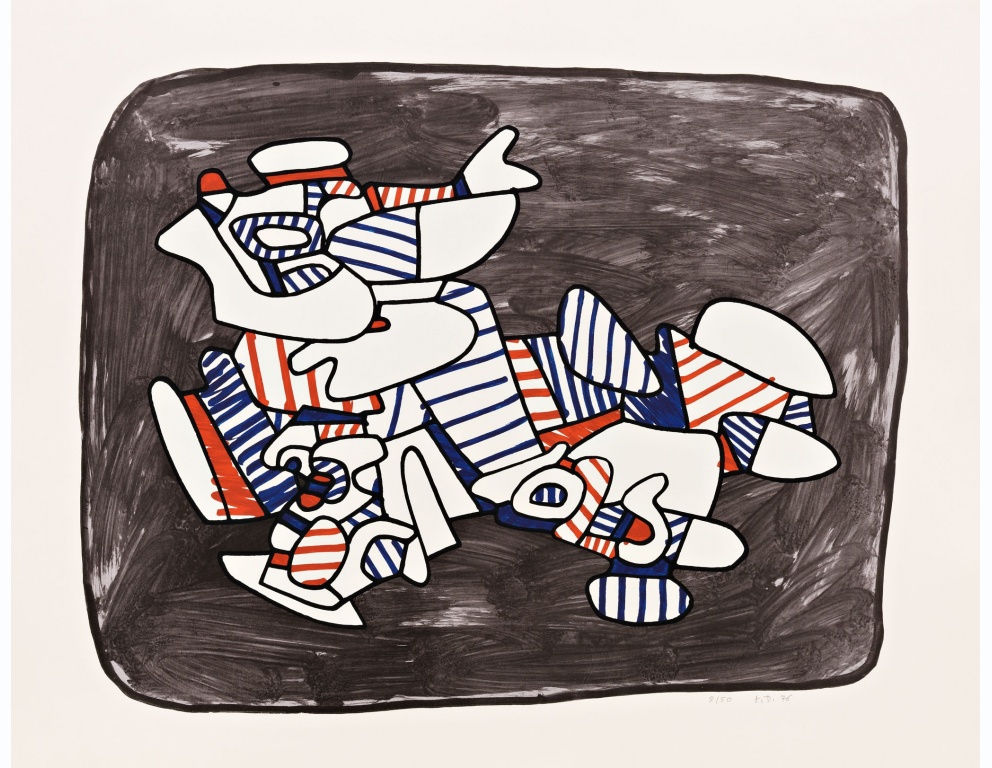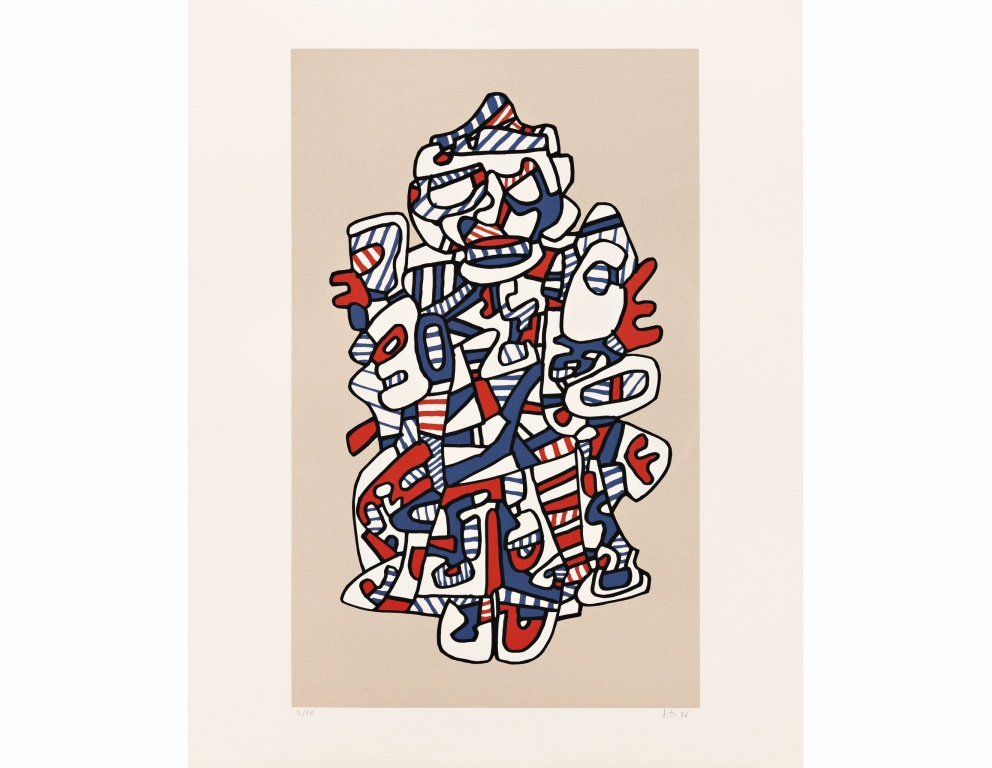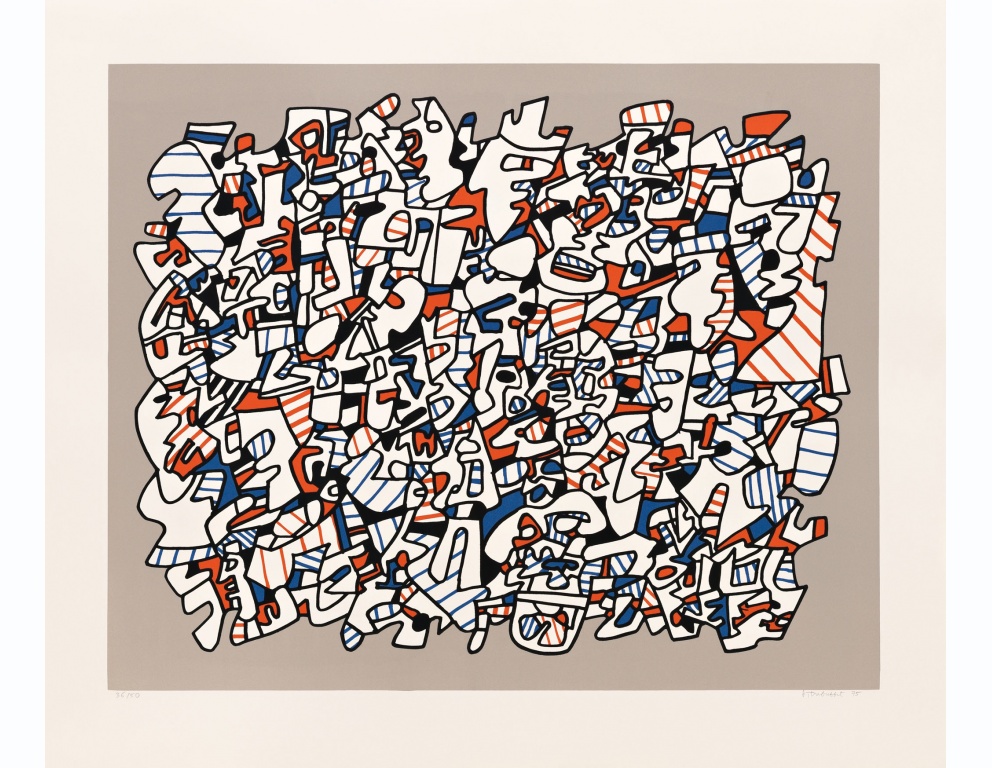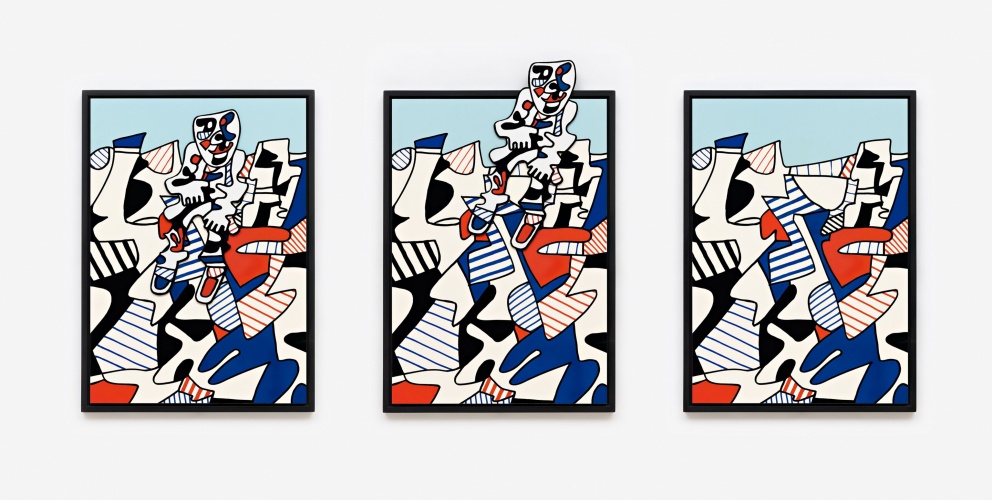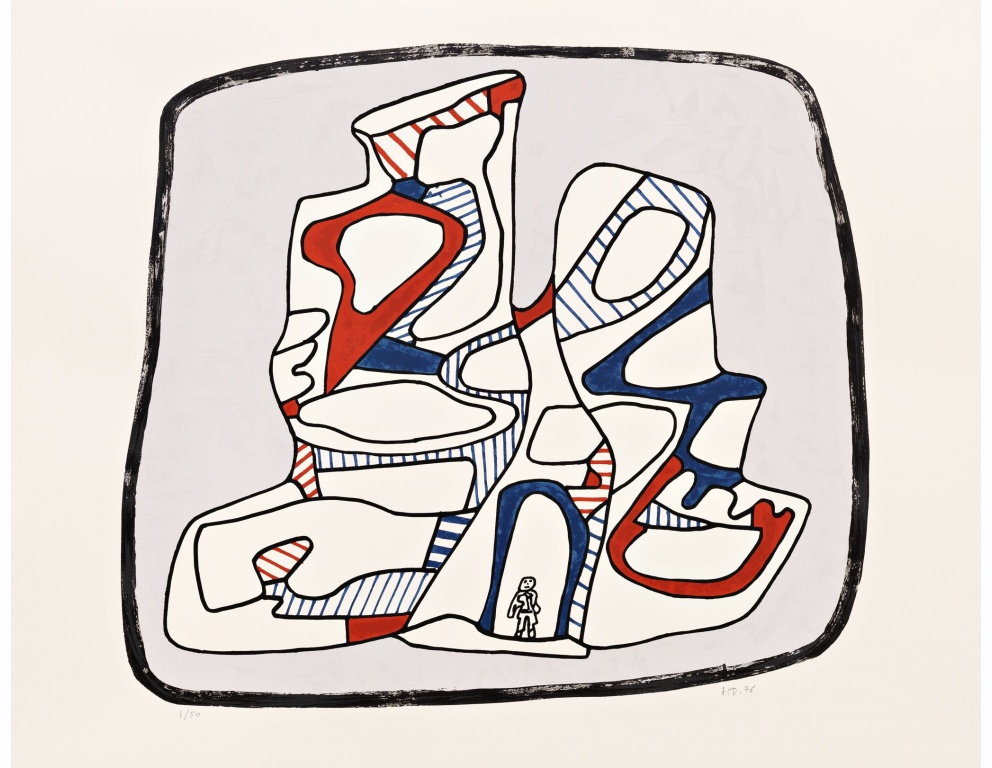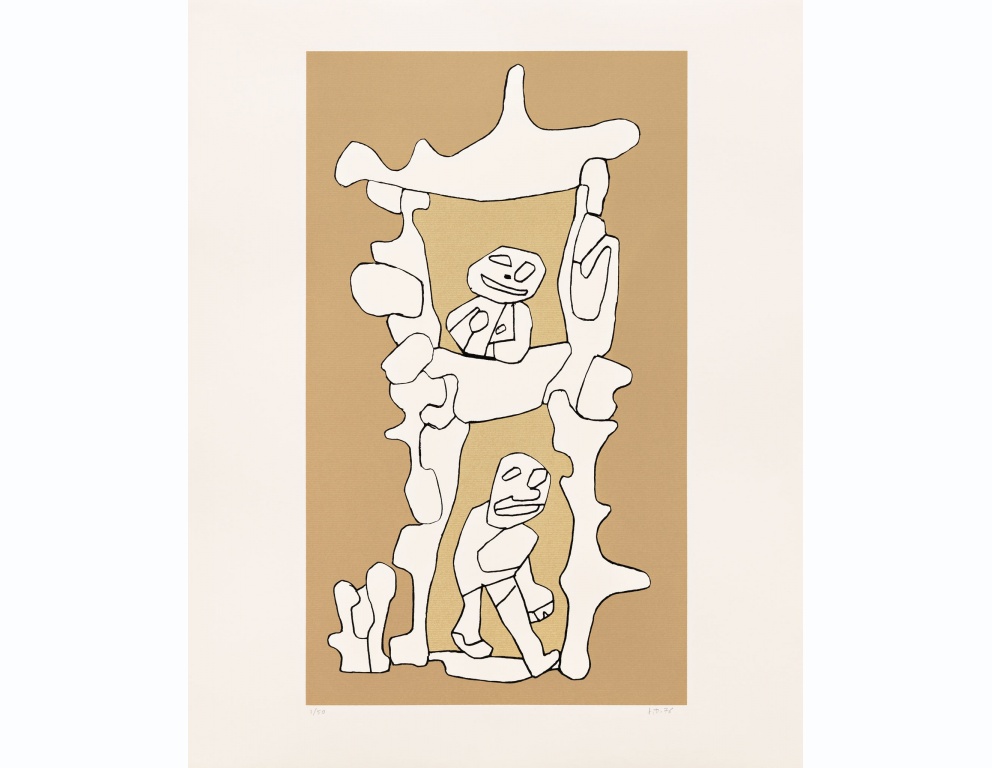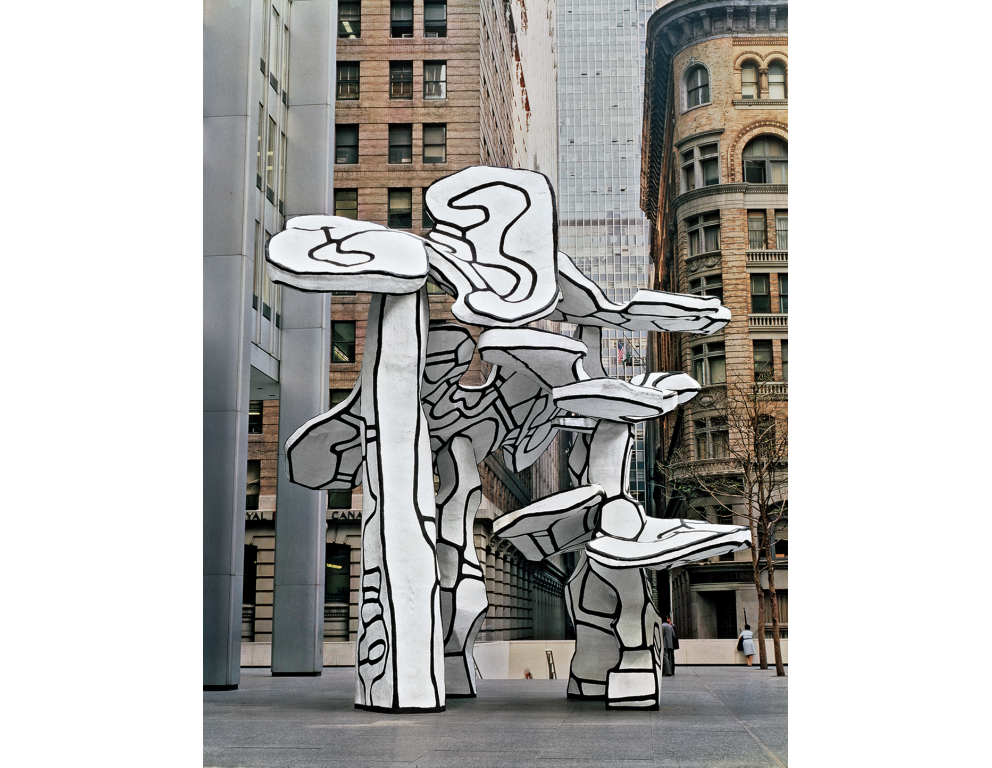Fugitif is a screenprint on metal and on a magnet, which allows for the central character to shift in the landscape. Pace Prints has exhibited this work with the central “fugitive” figure breaking out of the plane. This work is both print and sculpture. A multiple that an owner or exhibitor can manipulate fits comfortably within Dubuffet’s notion that both landscape and figure hold equal importance.
-
-
“…In my Hourloupe paintings, that is, in a meandering, uninterrupted and resolutely uniform line, which brings all planes to the surface and takes no account of the concrete quality of the object described, its size and position but, rather, abolishes all the usual categories and classifications of one notion and another, of the notion of chair, for instance, as distinct from that of tree, person, cloud, earth, landscape, or what you will.”
–Jean Dubuffet in a letter to Arne Glimcher, 1969 1
-
“The Hourloupe happened quite naturally. They are all about language that is unreadable—it is completely illegible. He was creating the alternate universe that he had always dreamed of”
– Arne Glimcher2
-
Jean Dubuffet attached the neologism “L’Hourloupe” to the iconic body of work readily identifiable by the red, blue and white color palette with a thick black outline. “Abstract formal elements combine to generate a topography reminiscent of a picture puzzle, from which figures and objects constantly seem to emerge.”3 This cycle, which began in 1962 and was the subject of most of Dubuffet’s later works, began as drawings and soon after became prints, paintings and sculptures. In the U.S., major institutions and public plazas in New York, Philadelphia, Chicago and Houston all have monumental works by Dubuffet from his “L’Hourloupe” cycle.
Pace Prints is honored to have worked directly with Jean Dubuffet through this period of time, making many of the prints and multiples that trace the history of “L’Hourloupe”. This online presentation explores the figures, structures and landscapes of Dubuffet’s iconography during this period.
-
Dubuffet created his first print project in 1944. His dedication to printmaking and its possibilities in various media represent important contributions to the emergence of printmaking as a vital area of artistic creativity in the decades following World War II. His experiments in lithography married his excitement toward bringing non-traditional materials (sand, earth, fabric) into painting with printmaking and led to innovations in the field. The works exhibited in this presentation are screenprints, a method perfectly suited to render the clean line of his “L’Hourloupe” cycle.
-
“Ontogenèse,” or ontogeny in English, refers to the study of the entire lifespan of an organism. The layering of forms within this image evokes Dubuffet’s notions of the organic nature of art making and an often unnecessary classification or hierarchy. Dubuffet spoke about this throughout his career after conceiving of “art brut” as a category for all art made by the untrained and uninitiated artist.
-
“At the beginning, this cycle included only drawings and paintings. Subsequently, I wished to give them greater corporality. I undertook to assimilate them to three-dimensional forms, presenting, as do all solids, several sides to the observer. The result was objects of equivocal status. They have been called painted sculptures, but this term is not really accurate. Rather, they should be considered drawings which extend and expand in space. I then desired to endow these un- leashed graphisms, these lines escaped from the flat sheet of their usual support, with monumental dimensions."6
-
Footnotes
1. In my Hourloupe paintings… Letter from Jean Dubuffet to Arne Glimcher, 1969.
2. The Hourloupe happened quite naturally... Arne Glimcher in Jean Dubuffet: Le cirque exhibition video.
3. Abstract formal elements combine to generate a topography… Raphaël Bouvier, "The Creation of a Different Landscape: L'Hourloupe" in Jean Dubuffet: Metamorphoses of Landscape (exhibition catalogue), Basel, Beyeler Foundation, 2016.
4. I should mention in passing that L'Hourloupe is a word... Remarks on the Unveiling of The Group of Four Trees, New York, October 24, 1972, from “Jean Dubuffet: A Retrospective”, Margit Rowell, 1973.
5. The signs in painting are much closer to the objects themselves... “Anticultural positions” Jean Dubuffet lecture, 1951.
6. At the beginning, this cycle included... Remarks on the Unveiling of The Group of Four Trees, New York, October 24, 1972, from “Jean Dubuffet: A Retrospective”, Margit Rowell, 1973.
-
Credits
All works of art © Jean Dubuffet / Dubuffet Foundation
Portrait of Jean Dubuffet © 1985 Kurt Wyss.
Photograph of Group of Four Trees © Al Mozelle.Current Dubuffet Exhibitions
Jean Dubuffet at Pace Prints, 32 East 57th Street
Jean Dubuffet: Brutal Beauty at the Barbican, London, through July 2021Resources
Pace Gallery: Jean Dubuffet
Jean Dubuffet Foundation
